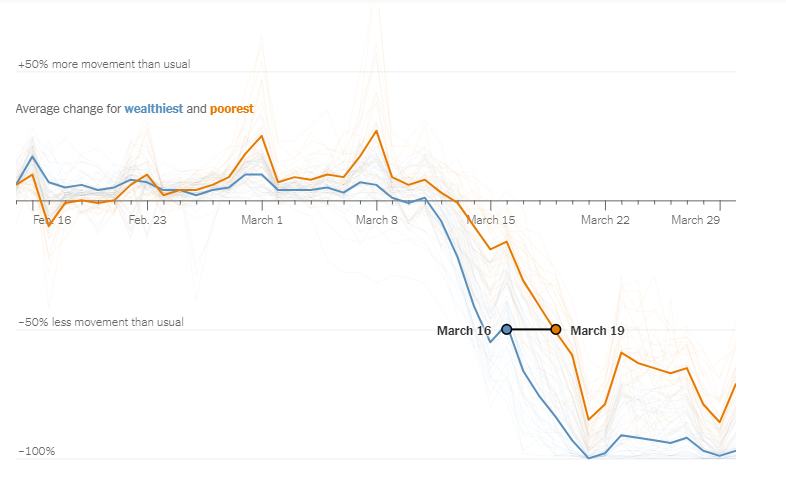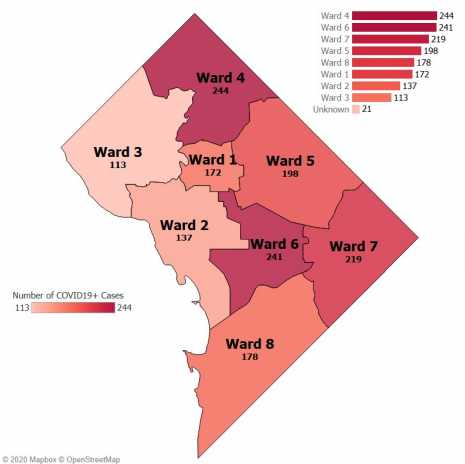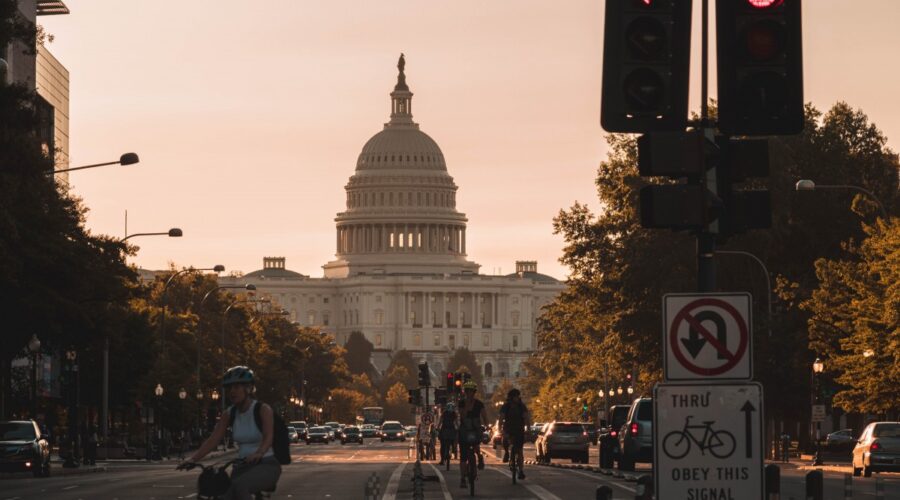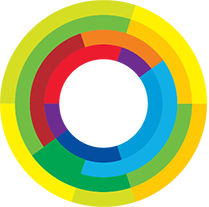I haven’t been a resident of Washington, DC for very long, relatively speaking. I moved here for graduate school in 2016, putting me just shy of four years in the District. I’m one of the many young professionals who come to DC to work in the policy world and who, by and large, are completely disconnected from the lived experiences and deep history of true DC natives.
Washington, DC used to be known as the “Chocolate City” for its majority black population. But years of rising home prices and in-migration of a white professional class have drastically changed the face of the city. Now, DC is hallmarked – like many other cities in the US – by a steady spread of glossy new neighborhoods and commercial attractions that displace long-time residents – who are usually people of color.
The corona crisis has laid bare pre-existing inequalities
Before the coronavirus hit DC, I could largely pretend that my neighborhood wasn’t “as bad” as other hotbeds of gentrification. I naively convinced myself that most gentrification here had occurred long ago and was, therefore, less relevant to my present housing decisions. Now the illusion has been shattered. My neighborhood teems with a previously glossed-over inequality – stratified by income and race – that is now laid bare on every sidewalk.
Where once my apartment building stood gleaming on a bustling block filled with dog parents and enthusiastic brunch-goers, now the only faces to be seen are those of essential workers (front-line workers in the US are more likely to be people of color) and the disenfranchised and homeless (also more likely to be people of color) who have moved out of the shadows into the doorways of shuttered storefronts. The former brunch-goers are now harried mask-wearers who urge their dogs to do their business as quickly as possible before retreating back into the relative safety of their apartments. Often the only noise to be heard is the early-morning construction on the next high-rise apartment development next door, construction, carried out primarily by Latino and black workers, that has been classified as “essential business” and so continues despite city-wide stay-at-home orders. The only folks I see on streets near the Capitol down on the National Mall are joggers (like myself, usually white), security guards (usually black), and the seemingly homeless (also usually black).
Wealth and race determine the risk of harm
It is a luxury to be able to stay (and work) at home. We’ve already seen across the US that the wealthy had a head start on social distancing (Fig 1). Now we are seeing the effects of that disparity, as front-line workers and people of color are falling ill and dying at disproportionate rates in cities across this country, including DC, Chicago, New York, and New Orleans. This pandemic has shown clearly that the undervalued “low-skill” work performed by immigrants and people of color – by janitors, meatpackers, shelf-stockers, home healthcare workers, and delivery drivers – is exactly the work that keeps this country running. And these are the workers who are being put most at risk on a daily basis.

Much of the media coverage of this issue has also pointed to the fact that black and brown Americans are more likely to have underlying medical conditions that put them at higher risk of coronavirus mortality. Those underlying conditions – heart disease, asthma, diabetes – are themselves the result of generations of unequal opportunity and the deliberate exclusion of people of color from resources like education, healthcare, good housing, clean air, and healthy food – perpetuated by the white decisionmakers from local city councils to the federal government.
And these unjust decisions and exclusions from power aren’t relegated to the past. On Tuesday, April 7, the state of Wisconsin held its primary election in the midst of a global pandemic despite efforts from the Democratic governor to postpone it and facilitate easier voting by mail. In a pair of late-night decisions that fell on predictable conservative-progressive lines, both the Wisconsin Supreme Court and the US Supreme Court ruled the changes unconstitutional, effectively forcing Wisconsin’s citizens to choose between their lives and their civic voice.
The city of Milwaukee – home to two-thirds of Wisconsin’s black population – had just 5 functioning polling places out of the normal 180, while many rural (white) counties and white-majority cities experienced relatively few disruptions. It is no coincidence that the parallel burdens of increased health risk and disenfranchisement fell disproportionately on the state’s black residents.
Washington, DC: Ecological destruction and marginalization go hand-in-hand
The Washington, DC area, like most of the country, is no stranger to wide disparities between the rich and the poor, between white people and people of color. From the first landing of Europeans, the region’s geography – and particularly the Anacostia River – has been manipulated by the colonizers to afford the extraction of wealth via ecological destruction.
The earliest European farmers felled huge swaths of forest along the Anacostia to sow first wheat then tobacco. The mass movement of earth into the river that resulted – as fields were abandoned once heavy-feeding tobacco had rendered the earth infertile – led to an ecological disaster that persists and has been perpetuated in many ways to this day. That early contamination and destruction of the river’s ecology led to the Anacostia River and its surrounding environs – and people – being habitually undervalued and abused over the last 400 years.
The river has suffered unfiltered industrial waste dumping, hosted an open-burning landfill for decades, and still receives the city’s untreated sewage and stormwater run-off when the sewer system overflows its capacity – which is often. From the native peoples whose lands were commandeered and then destroyed, to escaped slaves and freedmen who were relegated to subpar farmland, to black Civil War fighters who were encamped upon the river’s banks only to be plagued by cholera, to the majority-black communities who to this day live along the Anacostia and reap the unpleasant rewards of pollution, underfunding, and estrangement from the rest of DC – eastern DC has suffered.
DC’s coronavirus cases unsurprisingly cluster toward the east in the city (Fig 2) – the city’s population generally shifts from majority-white (69% and 81% respectively for Wards 2 and 3) to majority-black (over 92% for Ward 7 and 8) as you go west to east. The neighborhoods along the Anacostia have for years been neglected, under-resourced, and disconnected. And now they are bearing the brunt of the city’s pandemic.

Opportunity for change – or re-entrenchment of inequality?
One might be inclined to hope that the corona crisis will finally make plain the critical importance of ensuring global health and prosperity. In a globally connected world, we cannot isolate ourselves from the risks and threats that our neighbors across the globe or across the city face, even if we think our relative wealth and privilege should protect us. To paraphrase Audre Lorde, “I am not healthy while any person is unhealthy.” To ensure our own health and prosperity, we must care about and work to ensure the prosperity of those whom the powerful willfully forget.
But right now, I fear that instead, the result of this crisis will be the further entrenchment of disparities in wealth and power, as white-collar workers continue to pull in salaries while America’s hourly workers wait for limited government relief, and the foundations of our democracy are further undermined.
For me, this crisis has manifested in the form of mild inconveniences. I no longer have access to my apartment building’s gym and its pair of spin bikes, leaving me with few options for a low-impact cardio workout. Going grocery shopping means preparing like I’m headed to the battlefield: outdoor clothes donned, cloth mask affixed, designated shopping bags strapped to my back, dish cloth doused in disinfectant folded neatly in my back pocket to wipe down the shopping cart handle. Working from home means getting used to working on Excel spreadsheets without my large monitor that’s stuck at the office.
For millions of others in this country, this crisis is manifesting in job loss, homelessness, exploitation, sickness, and death. And the people like me, the ones who really need to see how deep and systemic the injustice is – well, we’re too busy scheduling our Zoom calls to notice.
Footnotes:
[2] Figure 2. April 8 total COVID-19 cases across Washington, DC’s 8 Wards.


